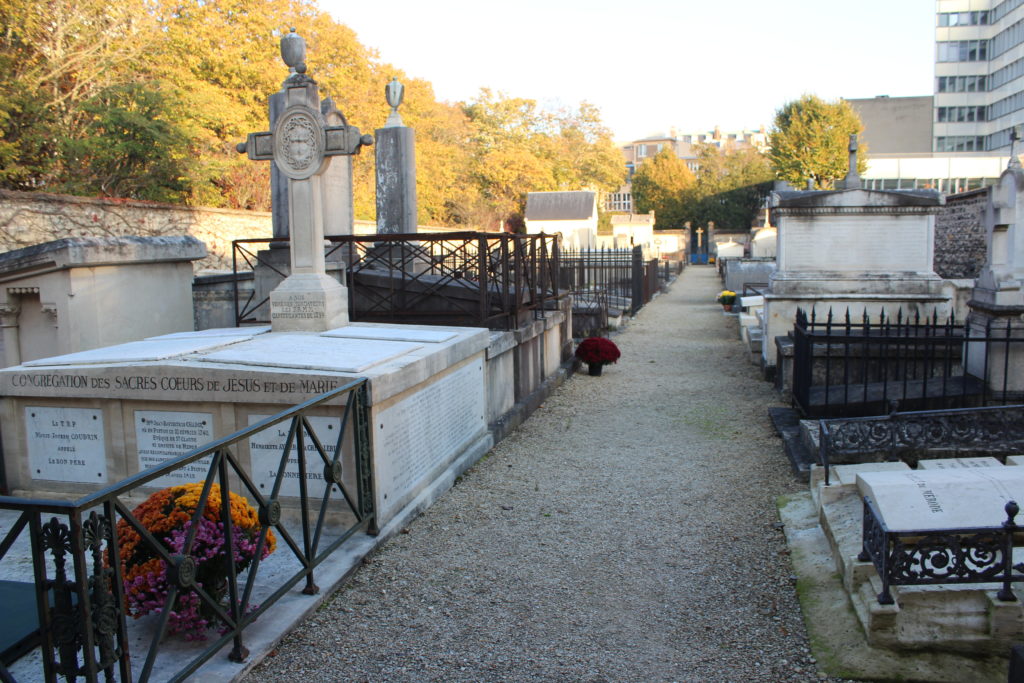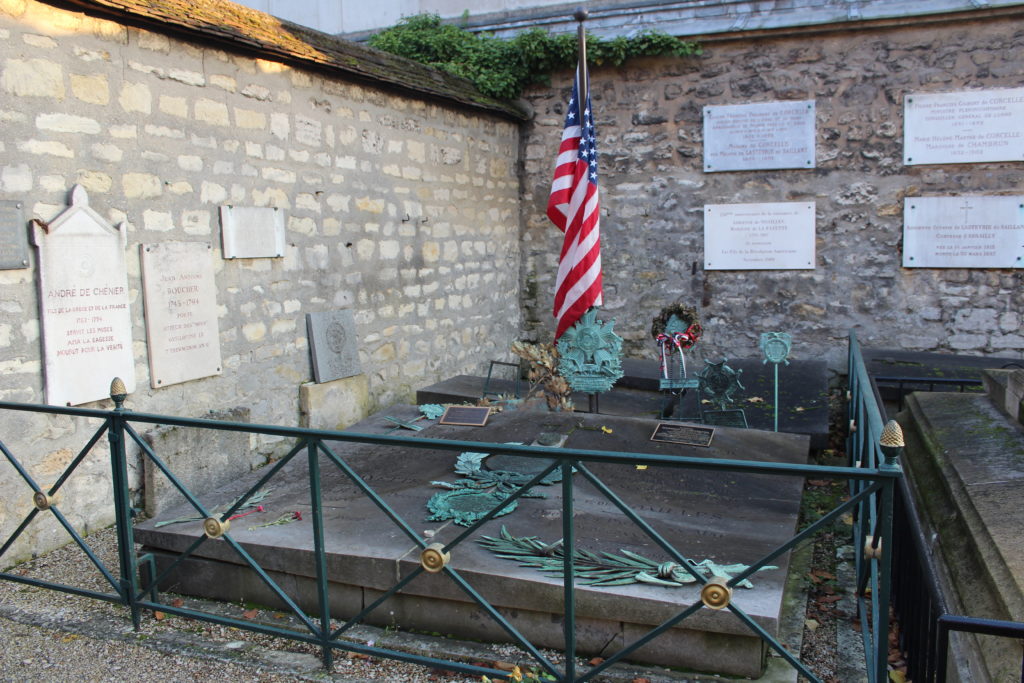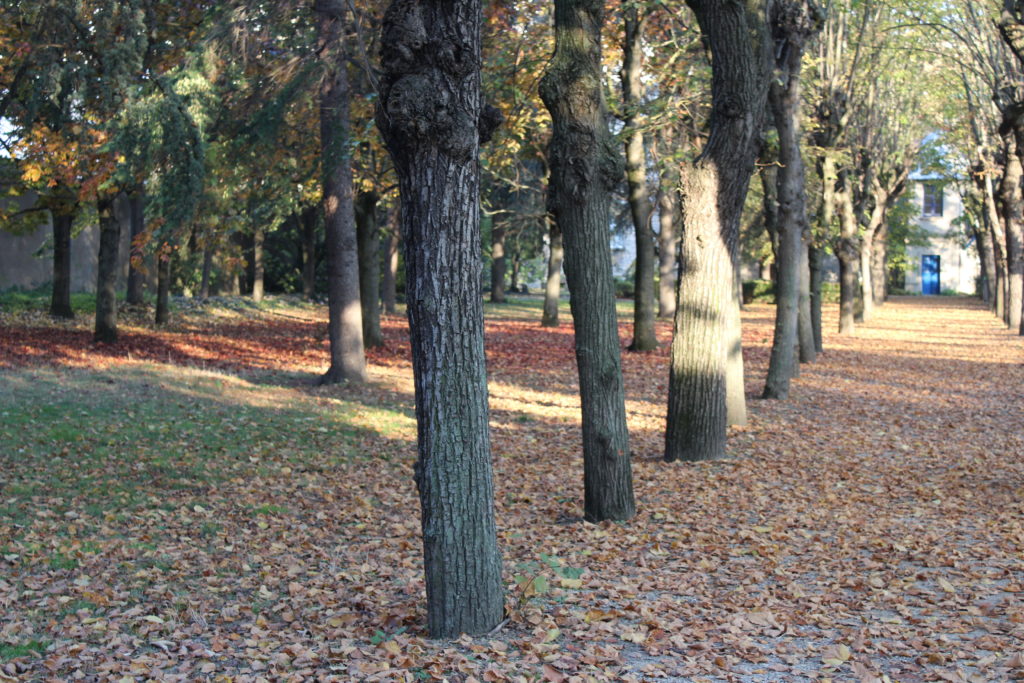There are 14 cemeteries within the city limits of Paris. The largest is Père-Lachaise, which is over 44 hectares in size. It is also a popular place to visit, with the tombs of Oscar Wilde, Jim Morrison, Heloise and Abelard, Colette, Molière, Gertrude Stein, and Edith Piaf drawing many a visitor. Jean-Paul Sartre, Simone de Beauvoir, and Charles Garnier can be found at the Montparnasse cemetery. And in Montmartre, the grave of Dalida is the most visited, along with artists such as Émile Zola and Gustave Moreau. All of these cemeteries are owned by the city, and therefore they are open to the public and free to enter. However, hidden away in the 12th, there is a cemetery that is privately owned called Picpus Cemetery, and last week, I was fortune to have the opportunity to visit this special place.
The origins of Picpus Cemetery date back to 1794 and the final days of the Reign of Terror. This was a particularly bloody time during the French Revolution. The Revolutionary Tribunal had been established in 1792 to root out political rivals and traitors to the revolutionary cause. However, things quickly got out of hand. Between 1793 and 1794, over 300,000 people were arrested and 17,000 were officially executed. However, it is estimated that up to 40,000 people died altogether. It was a dark period and a violent time in France.
The official method of execution was by guillotine, and in Paris, the guillotine was mainly used at Place de la Concorde. This is where both King Louis XVI and Marie Antoinette were executed in January and October of 1793 respectively. However, in the final days of the Terror, the guillotine was moved to Place de la Nation. Between June 13th and July 28th, 1794, 1,306 people were executed at this location. The bodies were dumped in a mass grave in a small plot of land nearby. When that grave was full, a second was dug beside it. On July 28th, Maximilien Robespierre was executed at Place de la Concorde, signalling the end of the Terror. The bloodshed at Place de la Nation finally came to an end.

At this point, the garden with the two mass graves was closed off. However, a couple of years later, Princess Amalie Zephyrine of Salm-Kyrburg secretly purchased the land. Both her brother, Frederick III, and her lover, Alexandre de Beauharnais, were victims of the Terror who were buried there. A group of aristocrats later bought the surrounding land, and a second cemetery was built next to the mass graves. In 1802, a committee was formed to oversee it, and this committee is still in place to this day. Today, the Picpus Cemetery is the only active private cemetery in Paris. However, even though it is active, it is not open for just anyone to be buried there. Only descendants of the 1,306 victims of the Terror at Place de la Nation can be buried at Picpus Cemetery. This holds true, even to this day.
Numerous noble families are buried in this cemetery, and there are many plaques on the walls dedicated to victims of the revolution and other conflicts. However, the most famous grave, and probably the most visited, is that of Gilbert du Motier, otherwise known as the Marquis de Lafayette. He was a central figure in both the French and American revolutions, and he helped to write the Declaration of the Rights of Man and of the Citizen. He is buried at Picpus Cemetery because of his wife, Adrienne, who lost her mother, sister, and grandmother to the guillotine at Place de la Nation. At his request, Lafayette is buried under soil from Bunker Hill, and an American flag sits atop his gravestone.

The Picpus Cemetery may not be the most visited cemetery in Paris. But it is certainly very special. The cemetery is adjacent to a surprisingly large park, and as you walk down the path, the sounds of the city simply melt away. By the time you reach the graves, there is a sense of calm and stillness. The cemetery may have been born out of terror, but it is nice to know that the victims and their families can now rest in peace. Together.
The Picpus Cemetery is open to the public Monday – Saturday, 2pm-5pm. There is a 2 Euro entry fee.
Laura Moore is a professional storyteller who loves history and the many stories that make Paris one of the most fascinating cities in the world. Join one of her signature tours to learn the story of a city.




